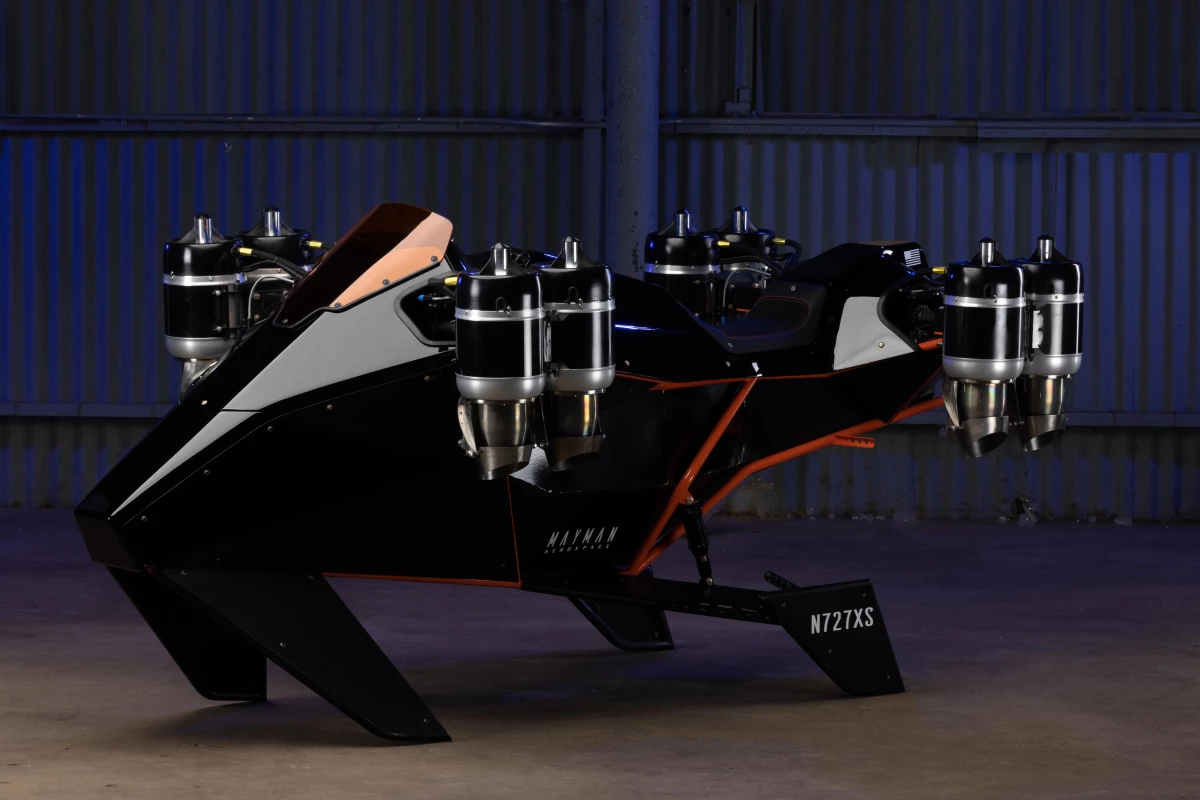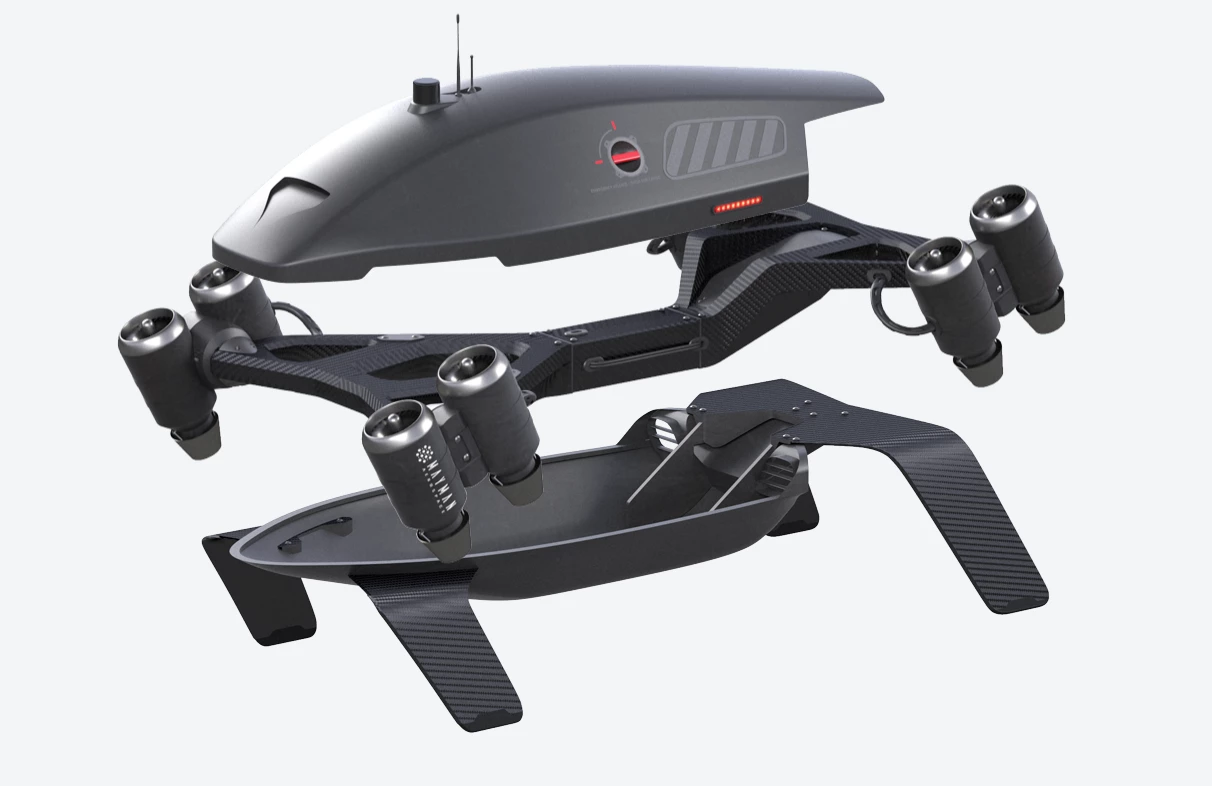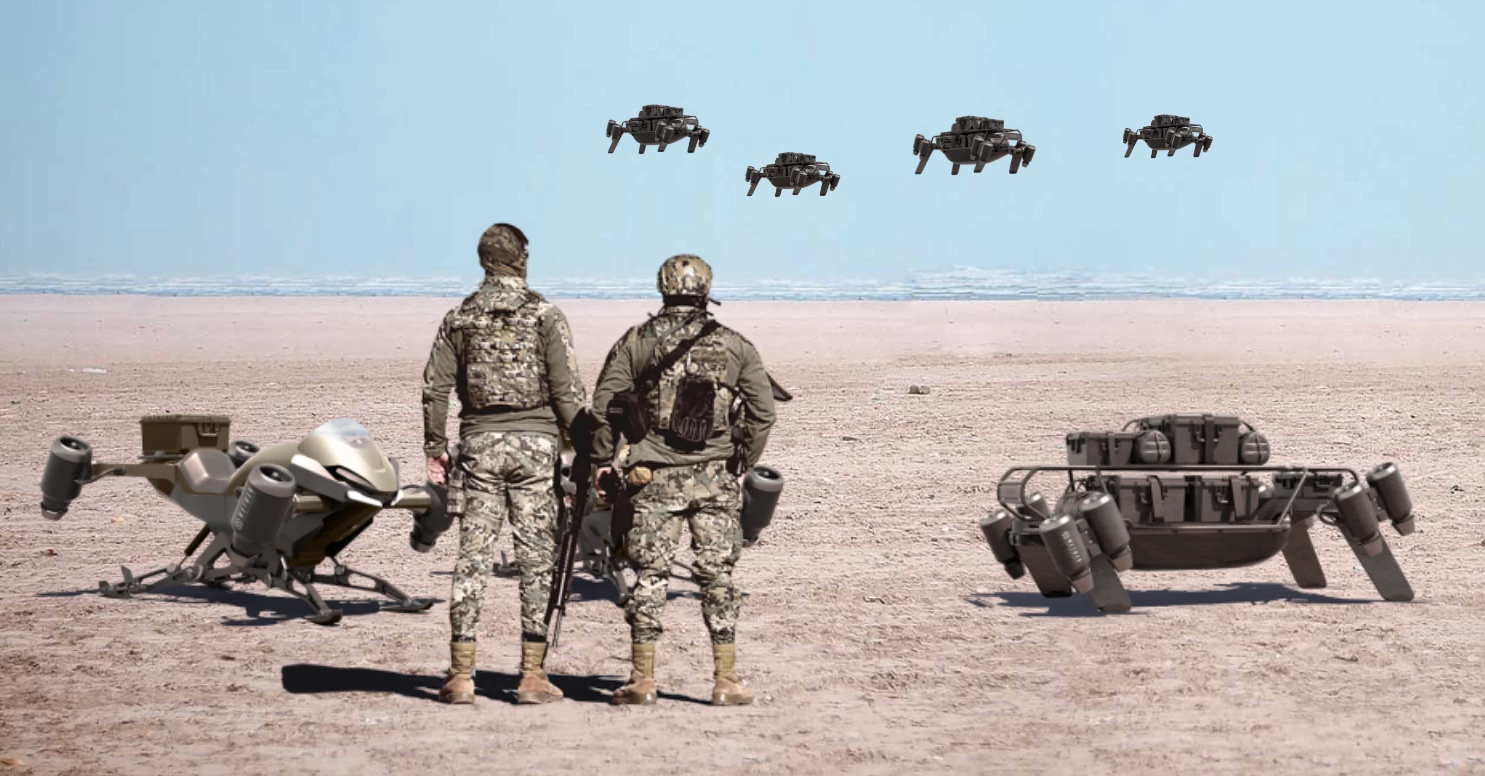After turning its main attention away from jetpacks and to its Speeder Air Utility Vehicle (AUV), JetPack Aviation has shown the fruits of its labors in the form of the flight-ready P2 Speeder prototype. At the Draper Venture Network CEO Summit in California, the Speeder made its debut under JetPack Aviation’s new Mayman Aerospace brand, which has been established to develop micro VTOL Speeders to suit a range of applications.
About the size of a motorbike, the P2 Speeder is the third full-scale prototype the company has produced on the path to a final aircraft. It is powered by eight jet engines that run on regular Zero Net Carbon or Sustainable Aviation Fuel (SAF), with an eye-catching glossy angular carbon fiber body and ergonomic pilot position designed for aerodynamic performance to maximize flight efficiency.
Safety is also obviously a major focus, with a proprietary onboard computer system that instantly rebalances engine thrust in the event of engine trouble. Ease of use is also front of mind, with getting into the air intended to be as simple as jumping on and hitting the start button.
While the prototype on show was of the piloted variety, the Speeder features a modular design and can also be configured for autonomous or remotely-piloted flight. While it is being targeted at police, rescue and military applications as a small VTOL personal aircraft, autonomous or remotely piloted configurations would massively expand the potential applications for the aircraft.

Such applications include firefighting, where it could carry retardant in quick-load twin tanks and dump or spray the contents in rough terrain or onto tall targets as required, and emergency medevac, where patients could be strapped to a rapidly detachable litter for speedy transport to hospital. It could also serve as an industrial cargo transport, with the ability to fly in cargo mode for 400 miles (644 km) at over 500 mph (805 km/h) while carrying loads up to 1,000 lb (450 kg).
“We launched JetPack Aviation a decade ago, and the name has served development of our JetPack technology well, but as we look to the future, we needed a brand that clearly defines our professional, as opposed to consumer, Speeder product and markets,’ said Mayman. “Mayman Aerospace is pushing the outer limits of VTOL flight and will continue to innovate and incorporate new technologies including hydrogen powered turbine engines, electric fanjets and turbofan propulsion, complex ‘sense and avoid’ sensors for autonomous swarming, and potentially even supersonic flight.”
The company says it is working with the FAA to get the Speeder certified and is in advanced discussions with potential customers in national defense, critical cargo, woodland firefighting and disaster relief. Initial, remotely controlled flight tests of the latest prototype are scheduled to begin in Q3 of this year, with piloted tests slated for closer to the end of the year.
Source: Mayman Aerospace







